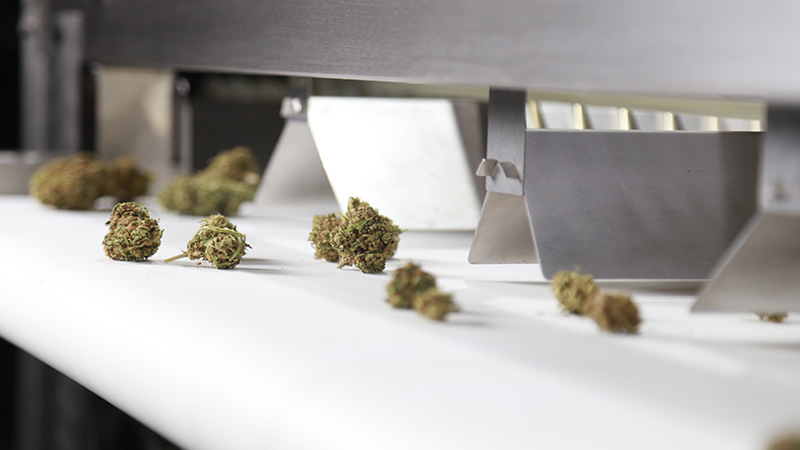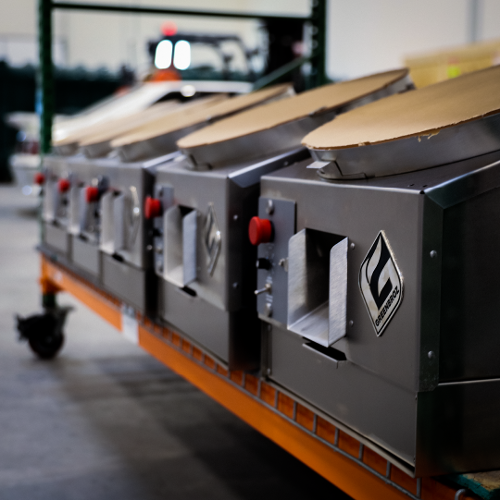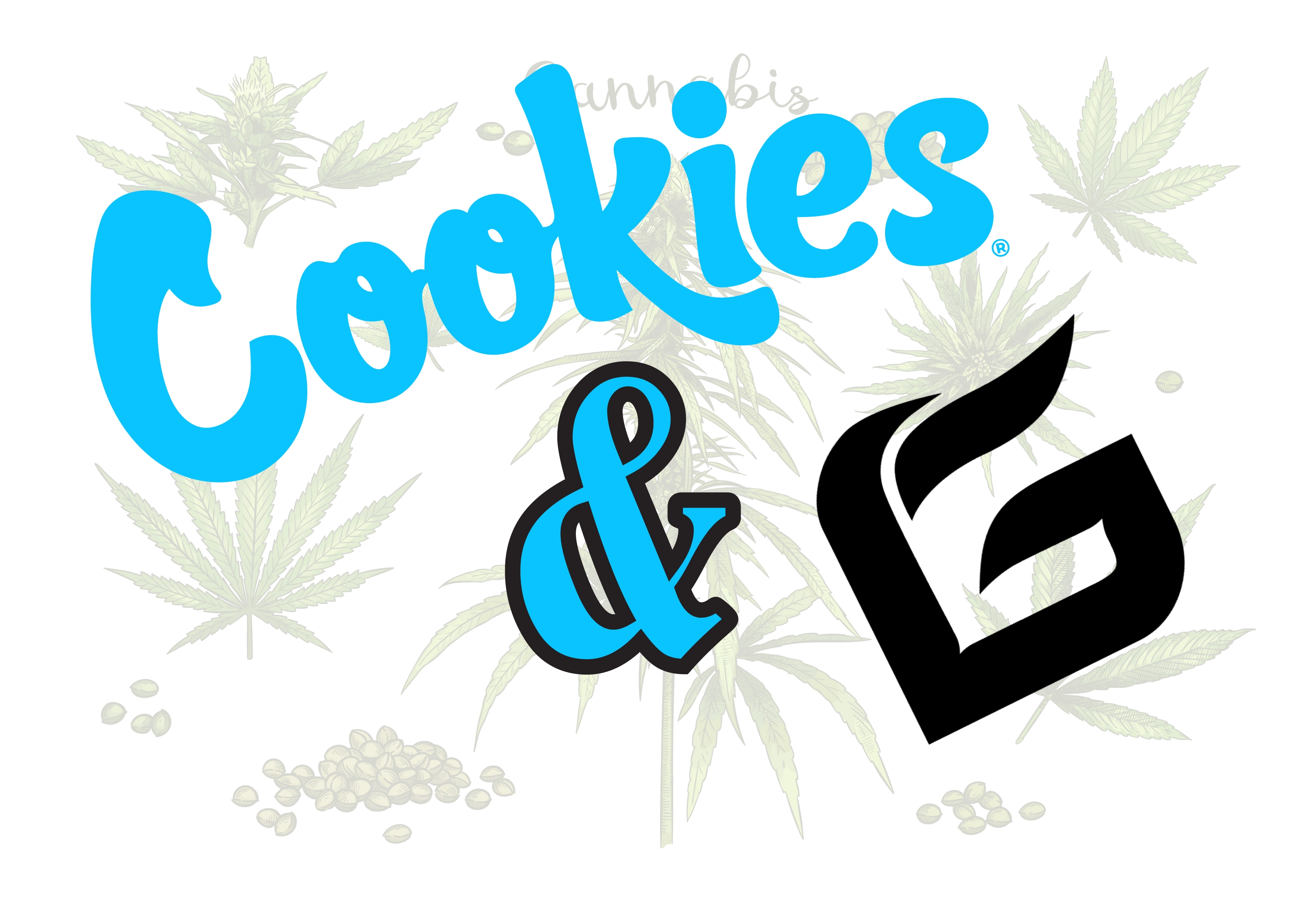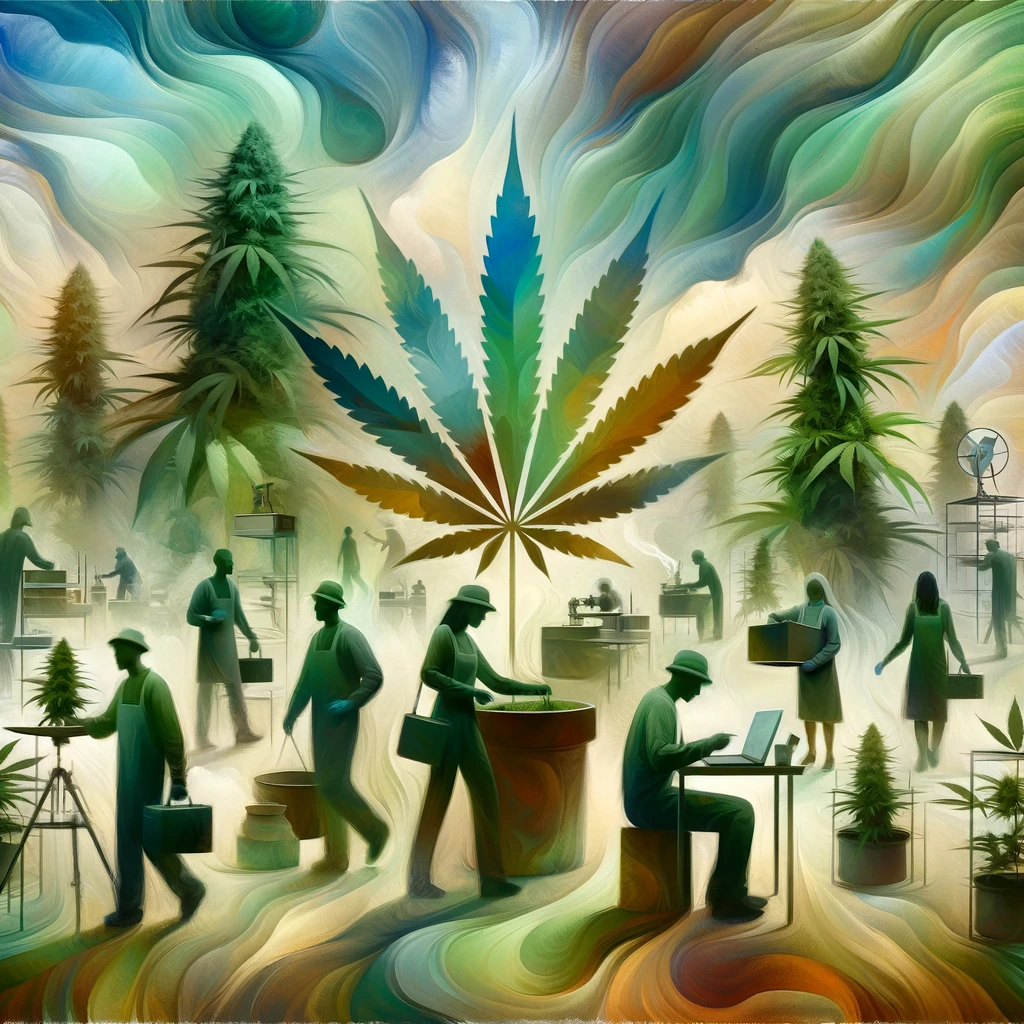Q: That's' one of the big selling points with GreenBroz, is the ability to maintain foxtails and the natural curves of the flower, rather than it coming out as a uniform, golf ball shape.
Eric: Absolutely. It's by far, especially with the zero drop design, the most gentle machine on the market. One thing I've noticed is a lot of facilities that have GreenBroz in place are very organized. They're very clean. All the staff are very meticulous individuals, and it's a very quiet work-place.
Q: The artisanal and the craft factor in a lot of the reasons that people choose GreenBroz trimmers. And saving those terpenes, like Eric mentioned, that you smell in the machine is such an important part of the process for GreenBroz.
Eric: I want to be clear, I don't want to make wet trimming seem like a bad process. Because there are some people that can't do a dry trim. You can get a really good result from wet trimming. But my point was that a lot of the times when people do a wet trim, they're in a rush and they rush the rest of the process. So you see those consequences. But, at the end of the day, you call me right now on my phone 864.314.1443 and I will tell you that dry trimming is always going to give you the best result. That is the most scientific, slow, methodical process to get top quality high shelf products.
Q: That's one of the things I also want to point out: we're not bringing in Eric to only talk about GreenBroz, and prop us up and make us sound like we're awesome. He doesn't work for GreenBroz. He works for GrowGeneration, and they sell everything. So if you contact Eric, he's going to talk to you about your grow. He's going to tell you what machines they offer that are going to fit into what you want to do. And if he wants to change part of what you want to do to streamline your process, it doesn't matter what machine it is, you'll get that honest feedback from Eric.
Now that being said, I do want to talk about the Model M trimmer, because it's a newer release for GreenBroz. It was really a machine that wasn't entirely redesigned, but they did a lot of things to upgrade and change it. What's your experience been like with the Model M Dry Trimmer?
Eric: Just to be honest with you, that machine to me is damn near perfect. It's everything that I would call up Aaron (GreenBroz Sales) at nine o'clock at night and be like, "You got to change this, you got to change this. I can't clean it because of this." And I can tell that feedback went directly to the engineers because that machine, for one, is extremely cleanable, so you can break it down in a few minutes. I've actually taken one into a car wash and just sprayed it down in between demos. The breakdown and the clean-ability are just huge.
Q: Anything that touches the flower is surgical grade.
Eric: I always want to say surgical. I’m pretty sure it's food grade. But no, it's surgical.
All of those things are what this industry really needs. Coming from a background in the kitchen world, you couldn't have a wooden cutting board, and you couldn't have a watch with crevices on it for meat to get stuck in that could fall into a salad later on. You're making a salad for somebody. So those things are all in place because you're ingesting these products, whether through inhalation or actually through edibles or tinctures. So anything that helps us stay more sanitary, cleaner, more efficient, I'm a huge fan of.
Q: More than just dry trimming, I know when you started working with GreenBroz four or five years ago, it was the 215 and the 420 trimmer, and that was about it in terms of tools that GreenBroz had onto the market. The Alchemists were shortly after that, but since then, you've seen products like the Sorter come out. Sorting has got to be a bottleneck that this machine was designed to solve, right?
Eric: I had a lot of clients when I first told them, "Hey, there's this really cool Sorter” say, "What do I need to sort it for?" But it's because they didn't understand the proper process. And now that people are becoming automated and this industry is really growing, I'm seeing Sorters in every facility and they're super important. I even have a little tip trick that I know GreenBroz doesn't necessarily always recommend, but I like to sort before I go in the machine. Because that way, everything that's in the machine is of an equal size, and therefore requires an equal amount of time. Because you always give the analogy, I'm a little 130-pound runner, and if I go play contact football with a 250-pound linebacker, I'm not going to last as long as he is.
So I like to use it even prior to packaging, but especially after you trim, that machine is absolutely crucial for organization. My car is not the cleanest, but my golf bag is always in the exact same position and all my clubs are in the same slot. Organization is key to production.
Q: That's a great point you mentioned. We absolutely encourage people to sort before and/or after, wherever it works in your cannabis harvest process. You can create products by sorting into those different sizes. You sort the tinies, the smalls, the little shake out at the beginning, that can be sent to pre-rolls or sent to extraction. Sorting really comes into play when loading into the Precision Batcher specific sizes and you know that, "I need to throw in some 1.5 gram pieces, some medium, some smalls.”
But if you can sort before you trim - we've practiced this - and you can literally dial in a matter of seconds what that run is going to take. That's streamlining your process right there.
Eric: And that's the number one tip I could give anybody listening. When I sell a new machine, typically I would go to the facility, but recently I've been doing FaceTime consults. I tell them: "Go to RiteAid, buy a little journal, and start keeping a recipe book and note, this strain at this moisture level runs for this long." And then if you do it by size, you can start factoring in that variable as well.
Pretty quickly you'll accrue a data bank to pull from that makes trimming so efficient that it's almost mindless.
Q: We’ve also seen machines like the Cannagin Destemmer, and the Alchemist Trichome Extractor. GreenBroz has partnered with our premier partners at Green Vault Systems on the Precision Batcher, which is the absolute finest of batching technology in the industry.
Eric: You're a professional company. You're honest with your customers. You make a good machine, you back it up. Now there's only a few, maybe one other vendor I would speak that highly of, or manufacturer. But I have no problem telling the truth about you guys, you're awesome.
Q: You looked at other machines that GreenBroz has put out, and it's just nuts, the array. GreenBroz is looking to get to that end-to-end cannabis harvest solution for the customer, where basically they're tackling every specific angle of this harvest process. No one else is doing that, right?
Eric: Not at the scale you guys are doing it, because you're taking it all the way from the beginning. Let’s say we're doing this order at the beginning of the process, all the way from the Sorter to the pack-aging. And, even kind of dipping into the extraction side with the Alchemist. So no, especially with your new conveyors that I saw at MJBiz.
Q: Back to GrowGeneration. What sort of clientele are you guys bringing into your stores? What level? Is it for the beginner? Is it for the large commercial guys? Who's coming in?
Eric: It's really the full spectrum. We don't discriminate, nor do we isolate any one demographic. So for instance, I'm talking to a gentleman this morning that's just a little home grow operation here in Colorado and just wanted to automate his small cannabis harvest so he didn't have to bring friends over to the house to do his hand trimming. We have our commercial account managers that are handling enormous, football field-sized grows all across the state. So we're everything from the hobbyist to the biggest companies in the country.
Q: One thing we haven't covered so far is the overall best practices for the cannabis harvest process. Now, how have you seen that evolve over the last five years, back when machines and automation were just starting to get into these grows, to now where it seems like if you haven't streamlined your process, you're not able to compete.
Eric: No, you're not. And you're certainly not able to put out a quality enough product to compete. I would say the biggest difference I've seen is people are no longer cutting their flower down and throwing it into a Febreeze-lined trash bag. Now, they have completely environmentally controlled cure rooms, conveyor systems, and staff in a clean room that's specifically designed for cannabis harvest—versus just throwing down a tarp and running the machine in the garage. It's really just moved to a very professional level.
I know when I first started coaching people on dry trimming, they were very reluctant to the changes they would have to make to their process. But, I see now that they're a little bit more open to that because everybody moved with the masses. When you go down to The Clinic or any of the big or boutique grows here in Colorado, and you see this awesome product on the shelf, you're like, "Oh, well, how do I get that? How did they do it?" And now that the bigger companies are setting the example, and the smaller companies are kind of following along.
The biggest thing I've seen is people taking the time to do all the individual steps right, and having individual rooms set aside. The cannabis harvest room should be considered before you ever put a plant in the ground. It should be at the top of your mind because that is the bottleneck. You can grow the best flower in the world, but if you can't get it out to the retail shelves, what good is it?
It would be like Nike coming out with new Jordan, but not having a spot on the assembly line for it. Then on the day of production, they’re like, "I need a spot on the assembly line, now." Especially in the harvest season, if you don't already have a machine, you need to start looking at one in June. Because that is Macy's at Christmas for harvesting equipment and it has to be prepared or else it'll just be a bigger bottleneck.
So I would say out of all the things, that's the biggest difference, is people are starting to think of harvesting first and not two months late.
Q: So what kind of low hanging fruit, I guess, are we talking about in terms of someone considering streamlining or automating part of their cannabis harvest? What are the first parts that they absolutely have to consider and dial in before anything else?
Eric: Well, first and foremost, you got to grow a good product. So it needs to have a good profile, it needs to be a high-grade product. I grade product on a scale of A to D based on its density by volume, or density by weight. So the denser it is the better it's going to do, because the trimmer pushes against the profile of that flower. I would say 60% of the bad feedback I get from machines, I later find out when I get a picture of the flower, is that it's not a very good flower that they're running through in the first place. So it obviously isn't going to look good when it comes out.
So that's the first and foremost. If you don't feel like you're getting good density, my team at GrowGeneration, and I'm, pardon my language, not [B-S-ing] here—we have some of the top growers in the country. Our commercial account manager team, every one of those guys and gals could go be a head cultivator somewhere. They are absolutely brilliant and they can help you get that density you need.
The next thing I would say is having a good team. I truly feel it depends on the size of the cultivation, but a team of five to 10, really well-trained individuals with good work ethic—that’s crucial. Because the workload is only as good as the humans involved. And coming from a culinary background, I'm a little bit harsher when I talk about my requirements for workspace. I don't think there should be talking, I think everybody should have their head down and I think you should be moving as fast as humanly possible.
To give you an idea, and I told this story at a few presentations I've done: I used to work at a restaurant and we had a quail dinner. And our sous chef was in charge of de-boning 250 quail. I don't know if anybody's ever worked with quail, but they're tiny and their bones are small. Very meticulous process. So for days, that's all he did.
In our three o'clock meeting, my junior sous chef kind of made a joke and he said, "Hey, what do you think about when you're back there all day de-boning those quail?" We're expecting some kind of funny answer like, "Oh, I think about this and think about that." And he looked at us really serious and he's like, "I'm thinking about how to do my job faster." And that's the mentality that I see lacking in the production side of the cannabis industry. The faster you work, the better. So that's number two: having a good work team with a good work ethic, a good sense of urgency, and they're not milking the clock.
And then on top of that, you’ve got to have a great machine, and you need to know the proper procedures to run it. So you've got to have a Model M, if you're a small home grow—maybe a 215 Dry Trimmer. And you need to talk to me and talk to the team at GreenBroz to make sure you're doing everything right. So that's the number one thing.
Q: Especially out of the gate. If you can get the right process going out of the gate, as opposed to getting towards the end of your grow cycle and not having a plan, it’s immensely easier. Anything else you want to mention before we go?
Eric: Everybody watching: come by one of our stores, talk to our team, definitely grab some stock. It's an amazing company and we are in our infancy relative to what you're going to see over the next 10 years. I don't want to mention any big hardware supply stores, because I'm not sure if I'm supposed to, but we are going to be the big hardware supply store of cannabis.
~~~~~
You read it here—professionals like Eric Singleton from GrowGeneration, along with the team at GreenBroz, are happy to answer any questions you have about the cannabis industry. And, if you're looking for more insider tips, make sure to tune in to our Instagram Live broadcasts every Wednesday for new episodes.



